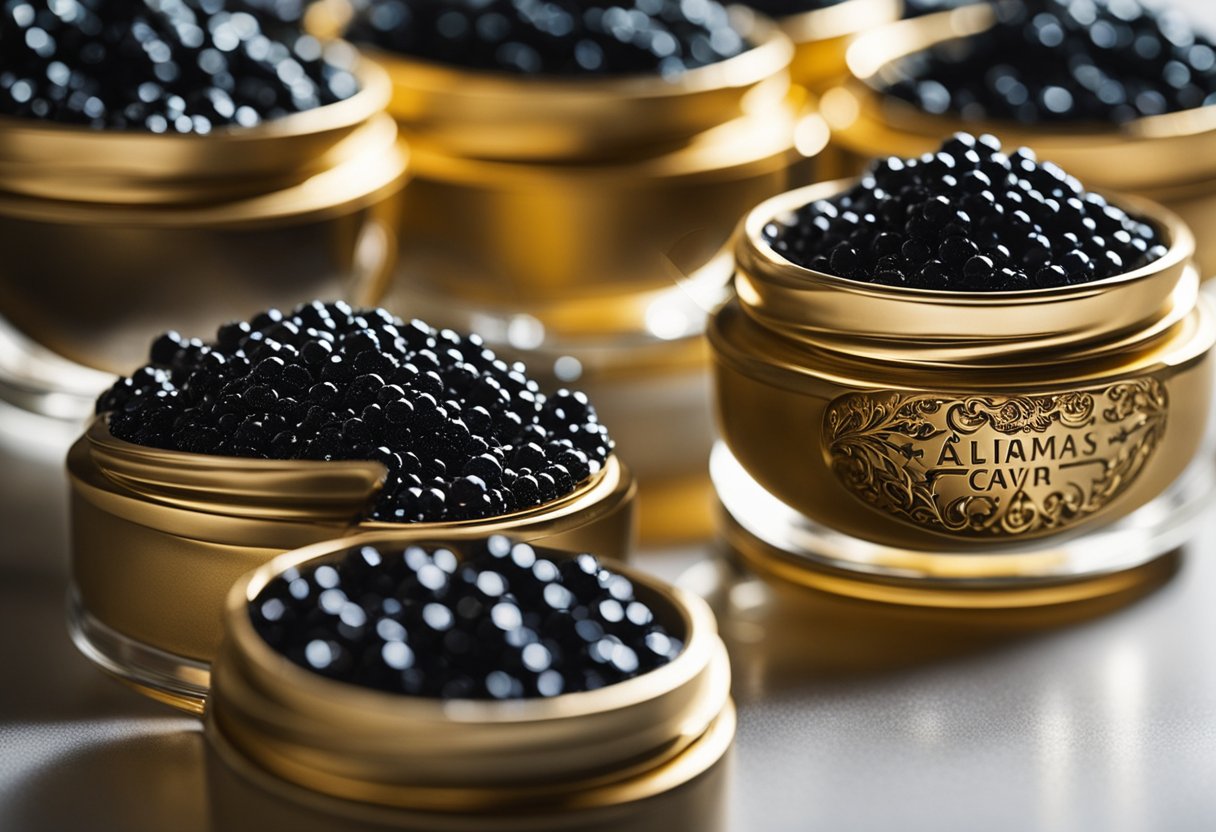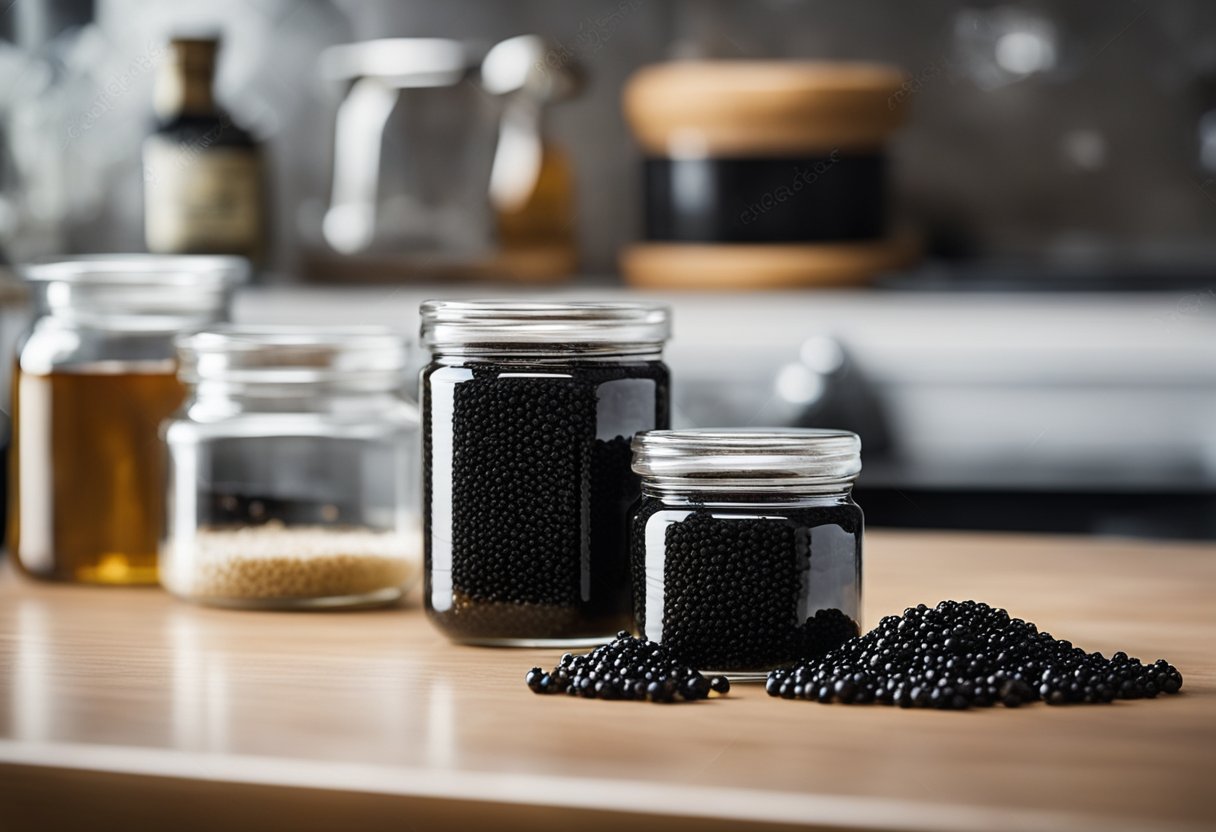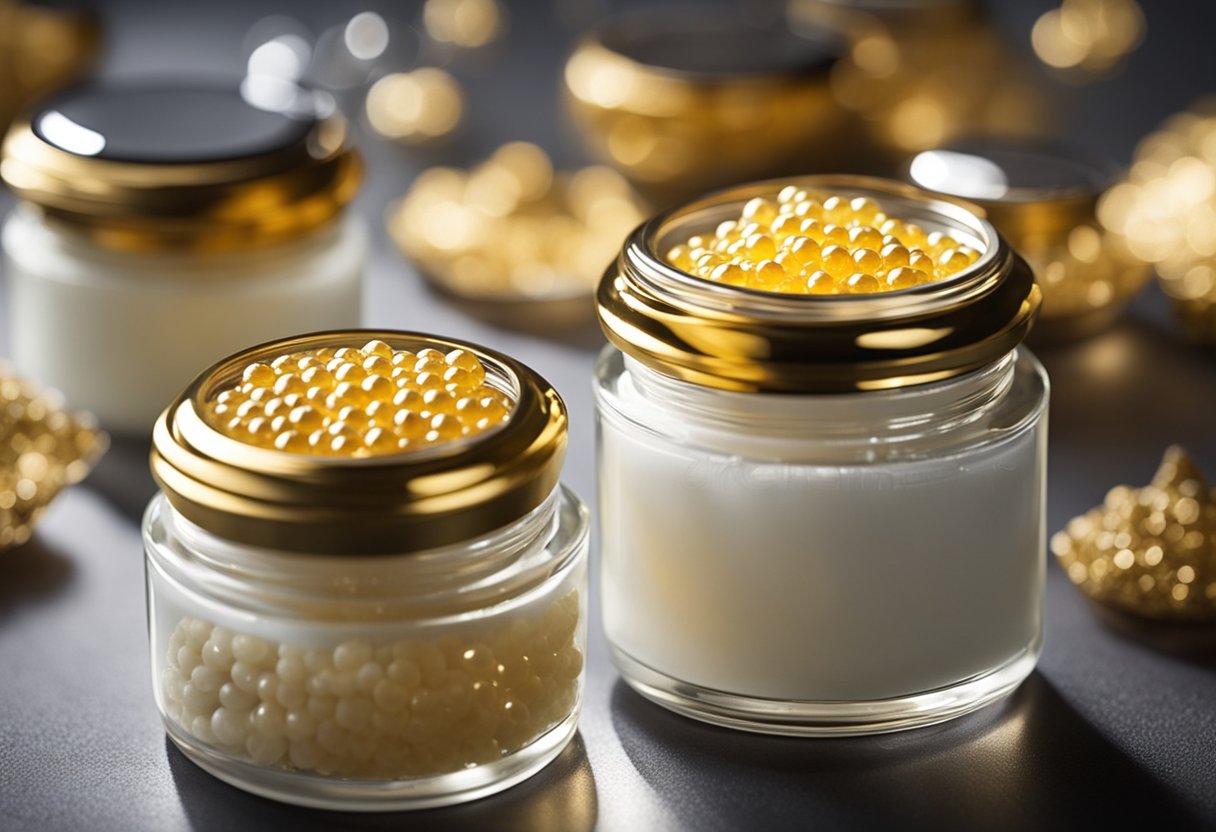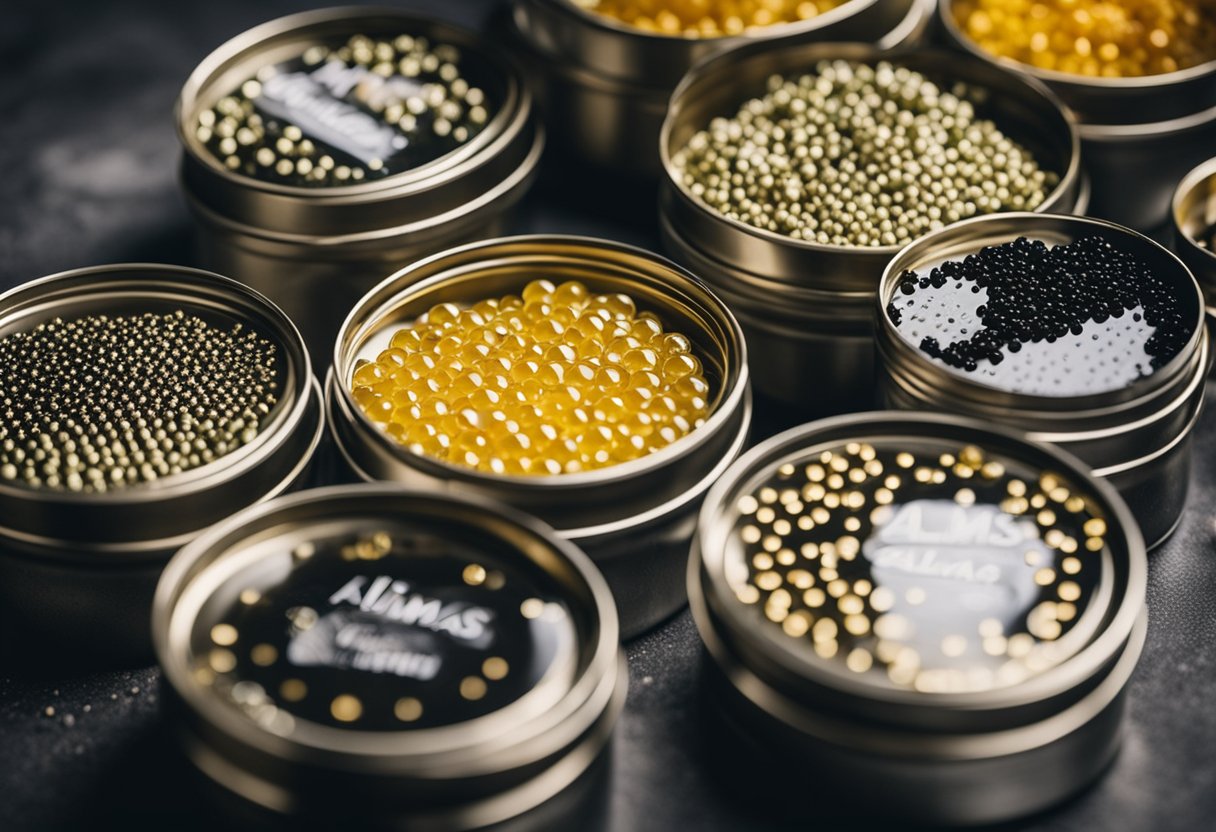I have always been fascinated by the world’s most luxurious foods, and Almas caviar is no exception. This rare delicacy is considered the most expensive caviar in the world, with a price tag that can easily reach tens of thousands of dollars per kilogram.
But what makes Almas caviar so special, and why is it so highly prized among connoisseurs?

Almas caviar is harvested from albino Beluga sturgeon, which is one of the rarest and most sought-after fish on the planet.
The sturgeon must come from a specific region of the South Caspian Sea, and only a very small number of these fish are caught each year.
The caviar is then processed and packaged in a 24-karat gold tin, adding to its exclusivity and luxury appeal. But there’s more to Almas caviar than just its rarity and packaging.
Key Takeaways
- Almas caviar is the most expensive caviar in the world, harvested from albino Beluga sturgeon in a specific region of the South Caspian Sea.
- The caviar is processed and packaged in a 24-karat gold tin, adding to its exclusivity and luxury appeal.
- Almas caviar is highly prized among connoisseurs for its delicate flavor and unique characteristics.
History and Origin

Almas caviar is a rare and highly sought-after delicacy that has a rich history and origin. As the most expensive caviar in the world, it is harvested from an albino beluga sturgeon (Huso huso) that can only be found in the southern Caspian Sea.
The sturgeon should be between sixty and one hundred years old, and the area is less polluted, which makes the caviar taste even better.
The word “Almas” translates to diamond in Russian, which is fitting as this caviar is considered a gem among luxury foods.
The history of caviar dates back to ancient times, where it was enjoyed as a delicacy by the Greeks, who imported it from the area now known as Crimea in southern Ukraine.
During the Romanov dynasty, caviar became a staple food in Russia, and it was enjoyed by the aristocracy and royalty.
Peter the Great was known to be a fan of caviar and is credited with popularizing it in Europe. Alexander the Great also enjoyed caviar and is said to have used it as a source of energy during his military campaigns.
Iran is another country with a rich history of caviar consumption, and it is believed that the Persians were the first to discover the delicacy. Today, Iran is one of the largest producers of caviar in the world.
In conclusion, Almas caviar has a long and storied history that spans centuries and multiple cultures. Its rarity and exclusivity make it a highly sought-after luxury food item, and its taste is considered by many to be unparalleled.
Beluga Sturgeon and Albinism
Beluga sturgeon (Huso huso) is a large, long-lived fish that is found in the Caspian and Black Sea basins.
It is one of the largest freshwater fish in the world and can grow up to 6 meters in length and weigh up to 1,500 kg. The fish is known for its valuable roe, which is commonly referred to as caviar.
Albinism is a genetic disorder that results in the absence of melanin, the pigment that gives color to the skin, hair, and eyes.
Albinism is rare in most species, including fish, but it is more common in sturgeon. Albino beluga sturgeon is a rare and prized variety of beluga sturgeon that produces the world’s most expensive caviar, Almas.
The Iranian beluga fish is the source of Almas caviar. The fish must be an albino female, which is a rare occurrence. Albino sturgeon are bright white with pink eyes and are highly prized for their unique appearance and the rarity of their eggs.
The age of the fish also plays a role in the quality of the caviar. The best Almas caviar comes from fish that are between 60 and 100 years old.
Albino sturgeon is not a separate species, but rather a genetic condition that can occur in any sturgeon species.
The genetic mutation that causes albinism is recessive, which means that both parents must carry the gene for it to be expressed in their offspring. The rarity of albino sturgeon is due to the low frequency of the gene in the population.
In conclusion, beluga sturgeon is a large freshwater fish that produces valuable caviar. Albino beluga sturgeon is a rare variety that produces the world’s most expensive caviar, Almas.
Albinism is a genetic condition that results in the absence of melanin and is more common in sturgeon than in other fish species. The rarity of albino sturgeon is due to the low frequency of the gene in the population.
Production and Quality
Almas caviar is the most expensive caviar in the world, and it is produced from the unfertilized eggs of the albino beluga sturgeon (Huso huso) found in the southern Caspian Sea.
The sturgeon fish can live up to 100 years, and the older the fish, the more elegant, smooth, aromatic, and delicious the caviar becomes.
The roe is extracted from the sturgeon using a delicate surgical procedure, and the eggs are then salted to bring out the creamy and nutty flavor.
The salting process is a critical step in the production of caviar, as it helps to preserve the eggs and prevent bacterial growth.
The quality of Almas caviar is unparalleled, and it is considered a delicacy by many. The white eggs have a slightly spongy texture and a delicate flavor that is both rich and buttery.
The caviar is best served chilled and is often paired with champagne or vodka.
However, the production of Almas caviar is highly regulated, and the supply is limited. This is due to the overfishing of sturgeons in the Caspian Sea, which has led to a decline in their population.
As a result, the import and export of sturgeon eggs are strictly controlled by international treaties to protect the species from extinction.
In conclusion, Almas caviar is a rare and luxurious delicacy that is highly prized for its exceptional quality and taste. The production of this caviar is a delicate and complex process that requires skill, expertise, and patience.
While it is expensive, the unique flavor and texture of Almas caviar make it a worthwhile indulgence for those who appreciate the finer things in life.
Characteristics and Flavor
Almas caviar is the most expensive caviar in the world, and it has unique characteristics that set it apart from other types of caviar.
One of the most notable characteristics of Almas caviar is its white hue, which is due to the albino sturgeon it comes from.
The spongier texture of Almas caviar makes it more delicate and prone to breakage, but it also gives it a unique mouthfeel.
The main flavor of Almas caviar can be described primarily as creamy and nutty, with a mildly salty overtone. It also has an almondy aftertaste that lasts long.
The taste mainly depends on the age of the harvested fish, with older females producing roe that is lighter and softer.
Almas caviar has a distinctive light yellow color, plump and delicate orbs, while its flavor is briny, creamy, and buttery.
The creamy and nutty flavor of Almas caviar makes it a popular choice among caviar lovers. The nutty flavor is due to the high fat content of the sturgeon eggs, which gives it a rich and buttery taste.
The creamy taste of Almas caviar is due to the high protein content, which gives it a smooth and velvety texture.
Overall, Almas caviar is a unique and luxurious delicacy that is highly sought after by food connoisseurs. Its distinctive flavor and texture make it a popular choice for special occasions and fine dining experiences.
Consumption and Pairing
When it comes to consuming Almas caviar, it is important to note that this luxury food item is best served chilled. This will help to preserve its delicate texture and flavor.
Additionally, it is recommended to use a mother-of-pearl spoon when serving caviar, as this will prevent any metallic flavors from affecting the taste.
In terms of pairing Almas caviar, there are a variety of options depending on personal preference. Traditionally, caviar is served with blinis or toast points, which provide a neutral base for the caviar to shine.
However, some people prefer to pair caviar with potato chips or even popcorn for a unique twist.
When it comes to beverages, vodka and champagne are both popular choices for pairing with caviar.
Vodka’s neutral flavor profile allows the caviar to take center stage, while champagne’s effervescence helps to cleanse the palate between bites.
For those looking to learn more about pairing caviar, attending a caviar masterclass can be a great way to gain knowledge and experience.
These classes typically cover topics such as caviar history, production, and pairing, and provide participants with the opportunity to taste a variety of caviar types and pairings.
Overall, when it comes to consuming and pairing Almas caviar, it is important to keep an open mind and experiment with different flavor combinations to find what works best for you.
With its rich and buttery flavor profile, Almas caviar is sure to impress even the most discerning of palates.
Almas Caviar in Luxury Market
As a delicacy, Almas caviar is one of the most expensive foods in the world. It is known for its smooth, elegant, and aromatic taste with a spongier texture.
Almas caviar is sourced from the rarest Beluga caviar, which comes from the Caspian sea. The white eggs are obtained from specimens more than 100 years old, making it a truly unique and luxurious product.
The exclusivity and rarity of Almas caviar have made it a highly sought-after luxury item in the market. It is often associated with diamonds due to its high price and rarity.
Almas, which means “diamond” in Russian, is packaged in a 24-karat gold tin, adding to its luxury appeal.
Caviar House & Prunier, one of the most renowned caviar producers, offers Almas caviar in its product line. Imperia Caviar and Azure Azure are other notable brands that offer this luxurious delicacy.
These brands ensure that the caviar is sourced from the highest quality sturgeon and processed to maintain its delicate taste and texture.
The luxury market has always been attracted to rare and unique products, and Almas caviar fits perfectly in that category. Its high price tag and exclusivity make it a status symbol for the wealthy and elite.
Those who can afford it indulge in the luxurious taste and experience that Almas caviar offers.
Almas Caviar and White Caviar

As a caviar enthusiast, I have always been fascinated by the different types of caviar available in the market. Among the different varieties of caviar, Almas caviar and white caviar have always stood out due to their unique characteristics.
White caviar is officially the most expensive food in the world, according to the Guinness World Records. It is harvested from the albino beluga sturgeon that lives in the Caspian Sea, mainly in the unpolluted areas near Iran.
The lack of melanin in the albino sturgeon results in a white color, making it a rare delicacy that is exclusive and scarce.
Almas caviar, on the other hand, is a type of white caviar that must meet some very specific standards. It is harvested from Iranian Beluga sturgeon, one of the rarest and sought-after fish on the planet.
The sturgeon must come from a specific region of the South Caspian Sea, and must be albino, which only adds to the mystique.
Almas caviar is known for its delicate and buttery flavor, with a texture that is both creamy and firm.
Both Almas caviar and white caviar are considered a luxury food item, reserved for special occasions and high-end dining experiences.
Due to the rarity and high demand, these types of caviar can be quite expensive, with prices ranging from thousands to tens of thousands of dollars per pound.
In conclusion, Almas caviar and white caviar are two of the most unique and expensive types of caviar available in the market.
While white caviar is harvested from the albino beluga sturgeon, Almas caviar is a specific type of white caviar that meets certain standards.
Despite their high prices, these types of caviar are considered a delicacy and are enjoyed by caviar enthusiasts around the world.
Also, check out some similar posts:
- Kopi Luwak Price: Understanding the Cost of the World’s Most Expensive Coffee
- Why Are Oysters So Expensive
Frequently Asked Questions

What is the taste of Almas caviar?
Almas caviar is known for its rich, buttery flavor and delicate texture. It has a slightly nutty taste and a creamy finish, making it a favorite among caviar enthusiasts.
Why is Almas caviar so expensive?
Almas caviar is one of the most expensive foods in the world due to its rarity and the difficulty in harvesting it. It is produced from albino beluga sturgeon, which can only be found in the southern Caspian Sea.
The sturgeon must be between 60 and 100 years old, and the eggs are then hand-selected and packaged in 24-karat gold tins, adding to the cost.
What is the difference between Almas and beluga caviar?
Almas caviar is a type of beluga caviar that is harvested from albino beluga sturgeon.
The main difference between Almas and other types of beluga caviar is the rarity of the albino sturgeon and the fact that it can only be found in the southern Caspian Sea.
Where can I buy caviar online?
There are many online retailers that sell caviar, including high-end food stores and specialty caviar shops. Some popular online retailers for caviar include Caviar Star, Marky’s Caviar, and The Caviar Co.
What are the benefits of eating caviar?
Caviar is a good source of protein, omega-3 fatty acids, and vitamins B12 and D. It is also low in calories and high in antioxidants. Some studies suggest that consuming caviar may have anti-aging and anti-inflammatory effects.
How much does Almas caviar cost in the US?
The cost of Almas caviar varies depending on the retailer and the amount purchased.
However, it is generally considered one of the most expensive foods in the world, with prices ranging from thousands to tens of thousands of dollars per pound.







